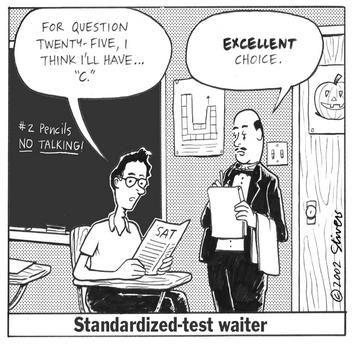Inequities in the SATs
The current situation with the global pandemic raises many concerns regarding how inequity, privilege, and other factors affect standardized testing and college admission in light of the COVID-19 pandemic.
As a high school student, you probably feel that the course of your life may be determined by a single test score, the result of countless hours of preparation chipping away at your sleep schedule. The current situation with the global pandemic raises many concerns regarding how inequity, privilege, and other factors affect standardized testing and college admission in light of the COVID-19 pandemic.
Socioeconomic inequality, exacerbated especially by the pandemic, plays an important role in many students’ education and standardized test scores. University of Massachusetts Assistant Professor of Education Jack Schneider reported that “as classes moved online, children in low-income homes and school districts suffered from a lack of access to computers, internet service, quiet places to study, and other resources.” Students who are unable to access these resources are at a significant disadvantage compared to their peers. These disparities in education ultimately translate into lower standardized test scores, which, for these reasons, have come to be seen as an unfair metric for a student’s academic success.

The test prep industry is another key element in the standardized testing process. Over the last decade, companies around the world capitalize on wealthy and privileged students, offering them tutoring and assistance at exorbitant prices. Patrick Cunningham of Mighty Prep Tutoring in Los Angeles, for example, charges $300 per session for SAT coaching—which is more than he made as a game show writer although working fewer hours in a day. His sought-after advice ran the gamut from tailored math tips for success to peculiar pre-testing exercises (such as drinking premium peppermint tea). Indeed, privileged students have a significant advantage in nearly all spheres of academic and social life, resulting in significant inequities in standardized testing and college admission.
To remedy this, colleges are attempting different approaches to the situation which have both advantages and disadvantages. In 2019, the College Board enacted the SAT Adversity Score (also called the Environmental Context Dashboard) which accounts for the level of environmental and school-related issues students might face that may affect the quality of their test preparation. The system was dropped by the College Board due to backlash from parents and educators who disagreed with reducing adversity to a single score—a flawed measurement in determining degrees of hardship or privilege.

Amidst the COVID-19 pandemic, colleges have acknowledged the difficult positions that many students—particularly those in financial hardship—face, in terms of access to testing centers or resources. As such, Harvard, Stanford, and Princeton among many other colleges have made standardized testing “optional.” This change allows those who are from modest economic backgrounds who are unable to take the test to still complete their application. At the same time, it will pose an advantage to the students who are able to take it. For example, if a student does not take the tests, the other parts of their application will become more important, while those who are able to take the tests are less dependent on their transcripts and essays. Some schools such as Hampshire College and Caltech are temporarily test-blind, which means they will refrain from taking test scores into consideration at all. Despite this leveling of the playing field, test-blindness may negatively impact those who are skilled at test-taking and would benefit from having their scores be considered.
Although where one goes to college is never a predetermining factor of success in life, it affords students opportunities and access to resources that they would not otherwise have. And if we hope to create a more equitable, more just world, implementing meaningful change in our education system—through a more fair metric for determining a student’s academic achievement, including their socioeconomic background—is paramount.

